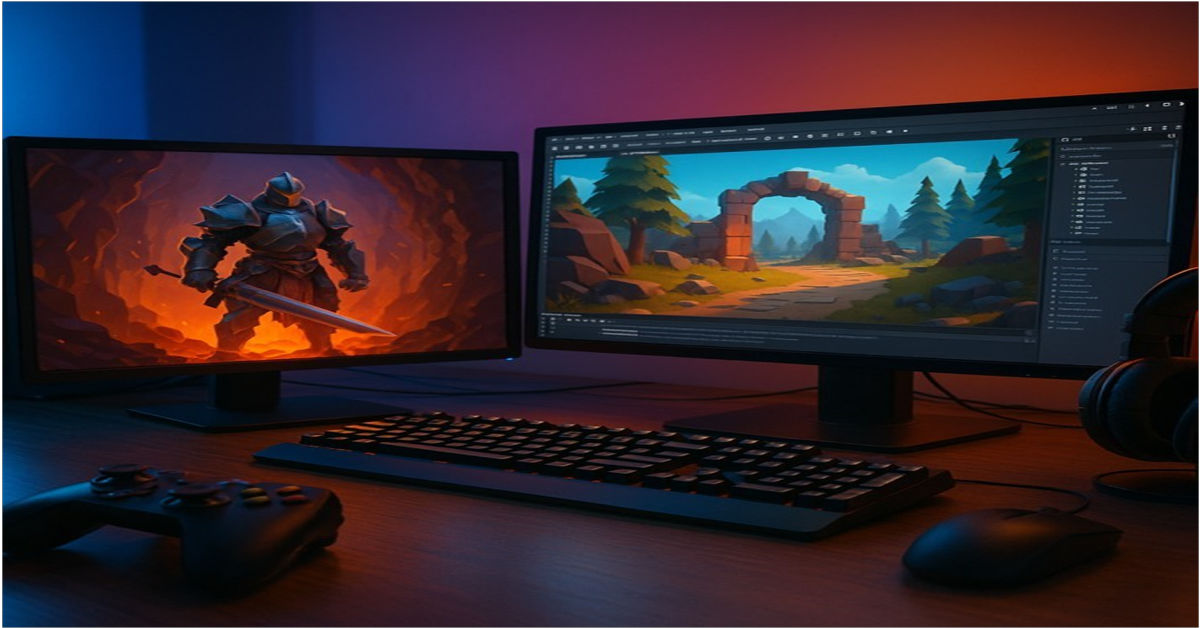Game production has advanced significantly, with engines such as Unity and Unreal Engine powering everything from tiny games to AAA masterpieces. However, with increased production costs and shorter release cycles, both small and large studios are looking for strategies to maximize ROI without sacrificing quality. One of the smartest strategies? Align hiring with your engine stack. By deliberately hire game animators and UI/UX designers that are fluent in Unity or Unreal, studios may decrease cost overruns, enhance production time, and provide polished, scalable experiences across platforms.
Let’s break it down.
Hiring Perspective: Comparing Unity with Unreal Unity is ideal for mobile
Unity
- 2D/3D, lightweight games, and AR/VR.
- Relies on Mecanim’s animation system.
- UI created with Unity UI Toolkit or Canvas-based UI.
- Ideal for rapid prototyping and iteration.
Unreal Engine
- Preferred for high-quality visuals, console/PC games, and cinematic storytelling.
- Control Rig, Sequencer, and Blueprints are used to create animations.
- UI built with Unreal Motion Graphics.
- Real-time rendering, Lumen, and Nanite are all built in (Unreal 5).
Knowing which engine your project is built on influences not only the tools you’ll employ, but also who you should hire and why.
Why hire game animators with engine-specific expertise?
Hiring animators who are familiar with your chosen engine is both a technical and expensive decision. If your animator does not understand the rigging or real-time rendering subtleties of Unreal or Unity, you will most likely encounter:
- Wasted hours in asset optimization.
- Multiple revision cycles.
- Breakdowns in Animation Pipelines
Tools to Look for When Hiring:
| Engine | Must-Know Tools | Role Benefit |
| Unity | Mecanim, Timeline, Animator | Streamlined state machines, reusable rigs |
| Unreal | Sequencer, Control Rig, Blueprints | Real-time cinematics, physics-based animations |
If you’re building a multiplayer console game in Unreal, hire game animators familiar with Control Rig for real-time physics-based animation. For mobile projects in Unity, seek animators who can optimize frame rate-sensitive rigs using lightweight blend trees.
Why Hire UI/UX Designers Who Prototype In-Engine?
Many studios make the mistake of hire UI/UX designers that solely use design software like Figma, Sketch, or Adobe XD. While these techniques are useful for wireframing, they do not take into account real-time constraints, particularly for gameplay UIs.
- When hiring a Unity or Unreal UI/UX Designer, look for experience with Canvas scaling, anchor points, and platform-specific layout design.
- Understanding UMG Blueprint bindings (Unreal) or UI Toolkit scripting (Unity).
- Experience designing responsive HUDs, in-game menus, inventory systems, and so on.
Hiring UI/UX designers that can prototype directly within the engine saves hours of back-and-forth between design and development, which directly affects your time-to-market and cost-per-feature.
Budget Impact: Real-World Cost Breakdown
Here’s how hiring engine-aligned experts affects your production budget:
| Hiring Strategy | Avg Cost Reduction | Time Savings |
| Game Animator with Unity/Unreal skills | 20–35% | 3–5 weeks/project |
| UI/UX Designer with engine prototyping skills | 25–40% | 4–6 weeks/project |
| Outsourced generalist (wrong engine fit) | – | -30% efficiency |
How Animators and UI/UX Designers Collaborate in Unity and Unreal
Today’s games blur the distinction between interface and animation, with animated menus, gesture-driven interfaces, onboarding tutorials, and dynamic HUDs.
- Collaboration occurs in HUDs and menus using motion-based feedback.
- Interactive UI animations (health bars, damage indicators).
- Animated Onboarding Experiences
- Cutscene UI overlays and transitions.
Pro tip: When you recruit both jobs with engine fluency, your UI feels integrated rather than overlay, and your game environment feels alive, even in menus.
Futureproofing: Skills You Should Hire For (2025 & Beyond)
| Role | Must-Have Tech Skills | Why It Matters |
| Game Animator | Motion Capture, AI Animation, Rigging | Required for next-gen realism |
| UI/UX Designer | Unreal UMG, Unity UI Toolkit, AR/VR UX | Critical for immersive UX on modern devices |
Whether you’re entering the VR gaming, Metaverse, or LiveOps space, employing engine-aware talent guarantees that your pipeline is prepared for whatever comes next.
Best Practices for Smart Hiring: Request Engine-Based Portfolios
Ask to see UI or animation work in Unity or Unreal, rather than just design mockups.
- Clarify production expectations.
Determine whether they will function with in-engine HUDs, mobile interfaces, or full motion cinematics.
- Use trial projects.
Begin with short-term projects, such as a login screen UI or a character idle animation.
- Avoid generalization.
“Designer” or “Animator” are overly broad terms; instead, focus on engine alignment and real-time experience.
Final Thoughts
In today’s production ecosystem, merely hiring UI/UX designers or game animators is insufficient; you must hire the proper ones who are compatible with your technology stack.
By combining Unity and Unreal’s built-in efficiencies with engine-specific skills, your company can:
- Reduce development time.
- Reduce expenses.
- Provide a higher-quality player experience
Smart recruiting, combined with the correct tools, is more than simply a recommendation; it’s a competitive advantage.

